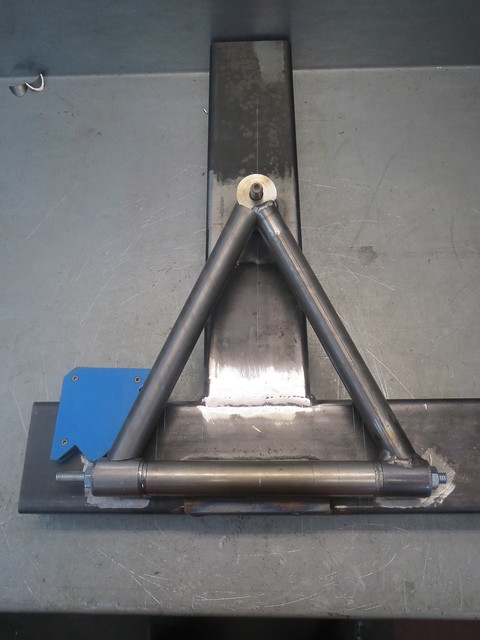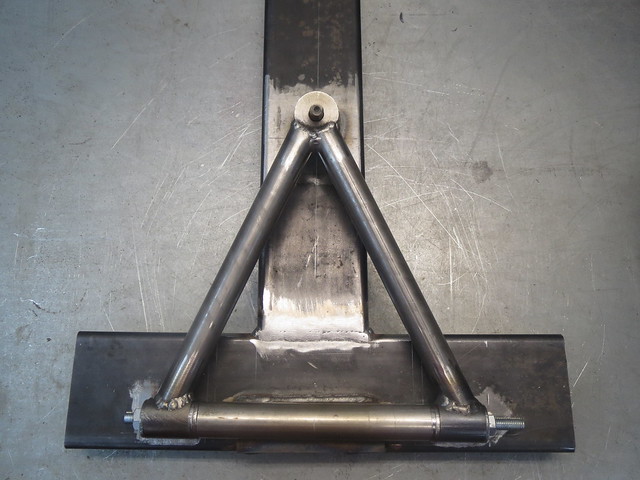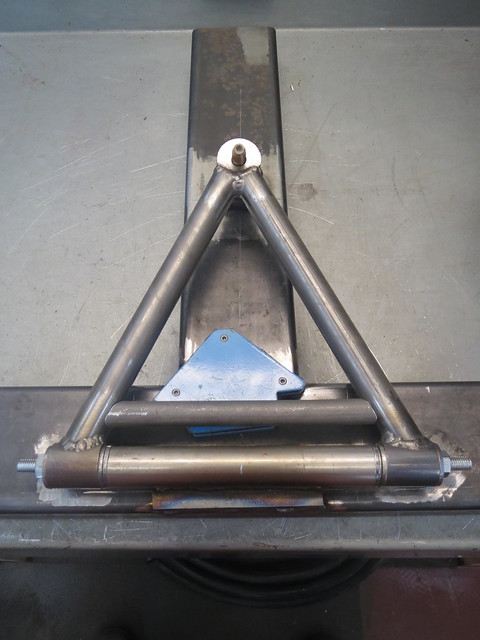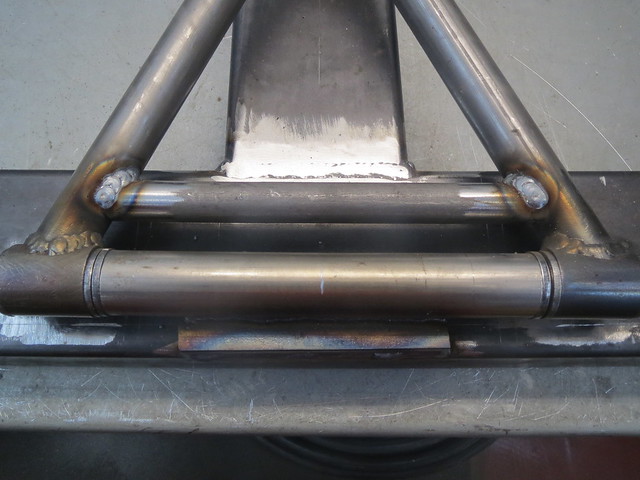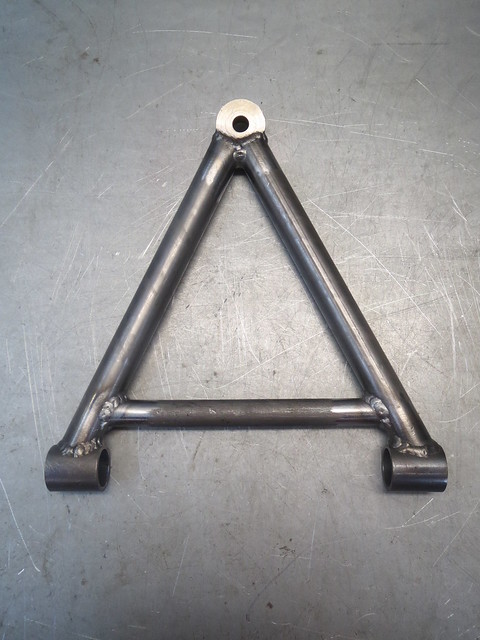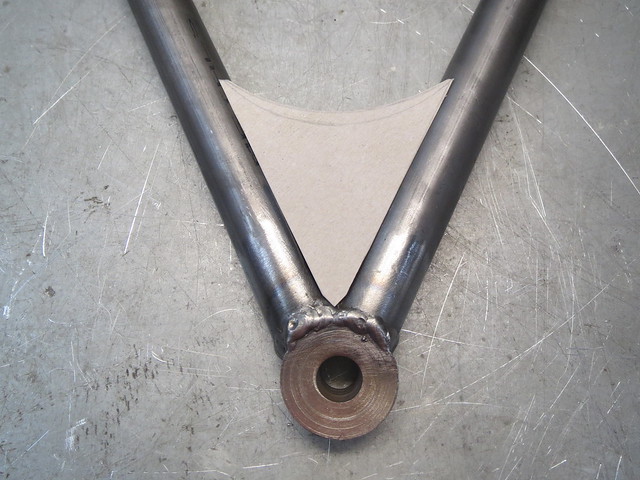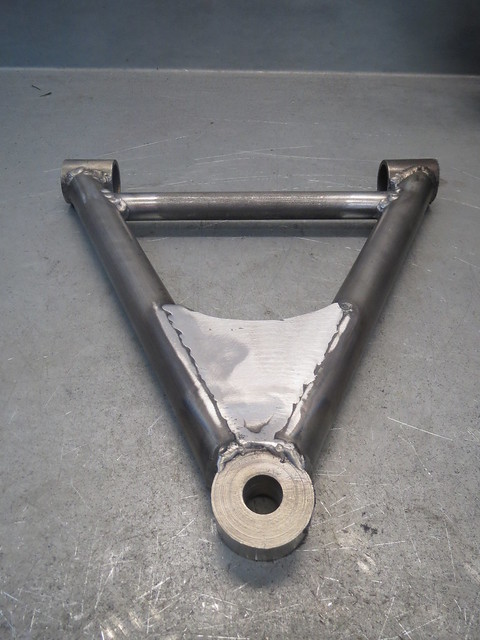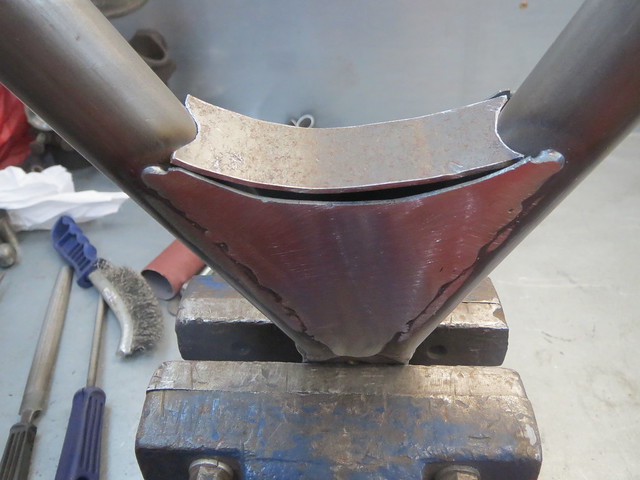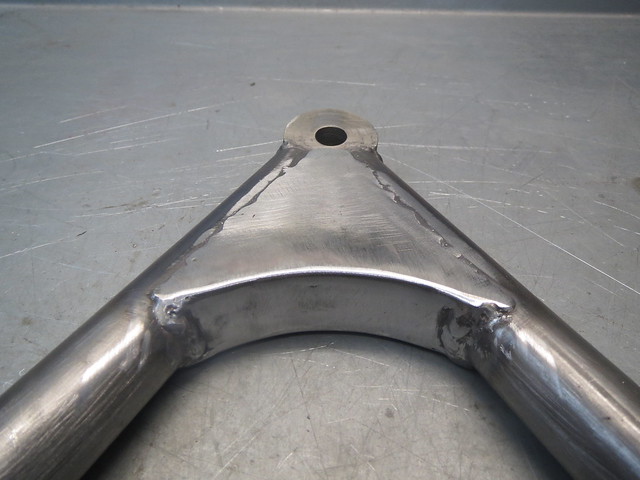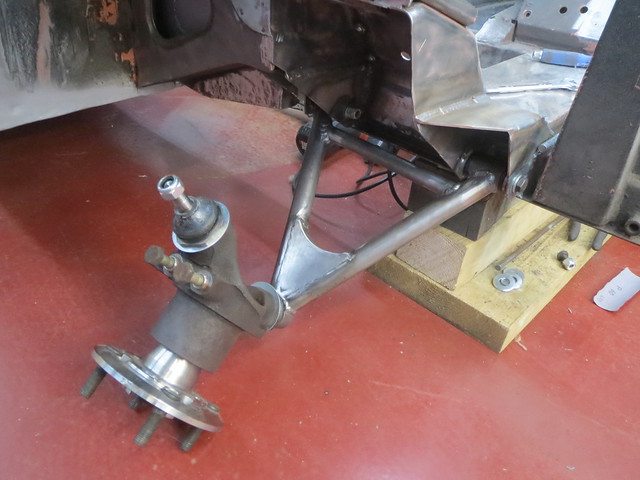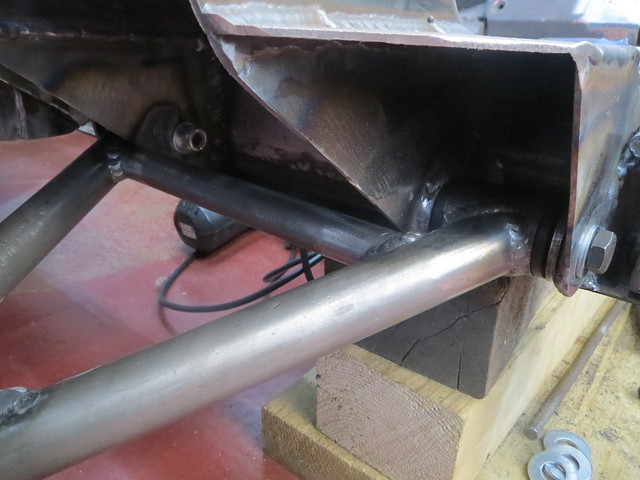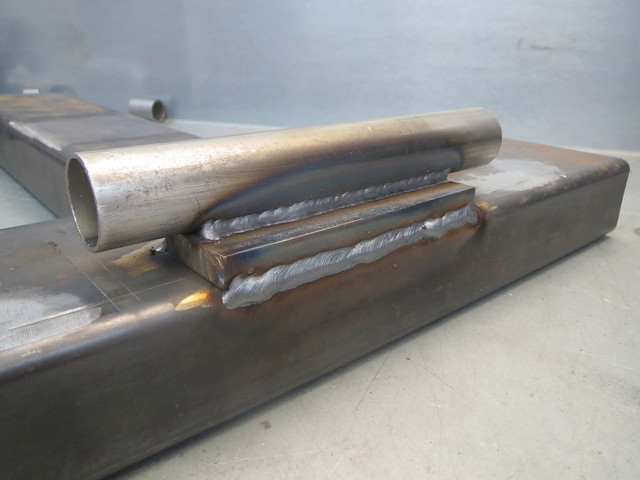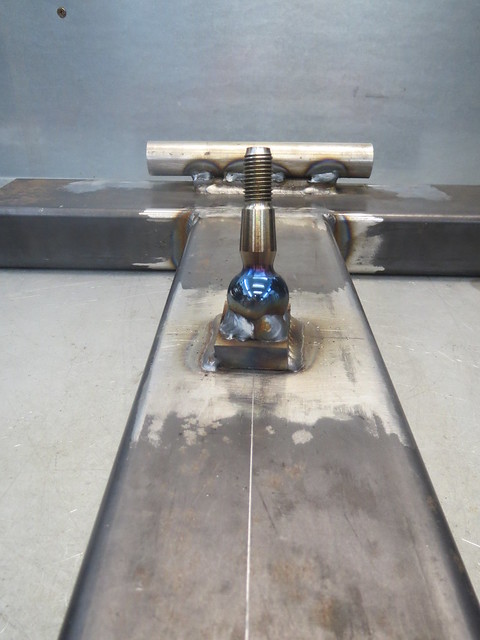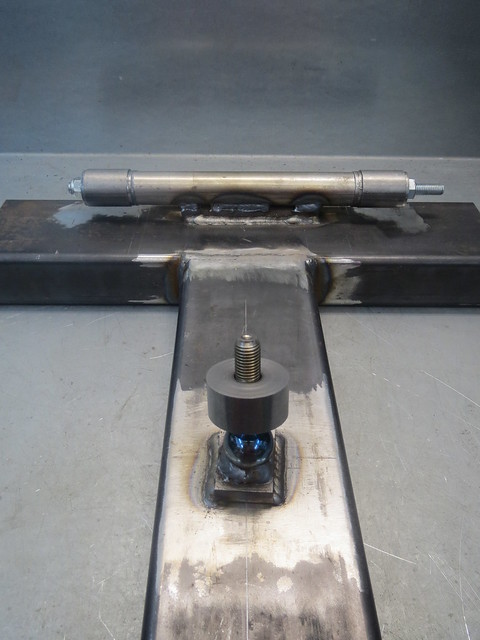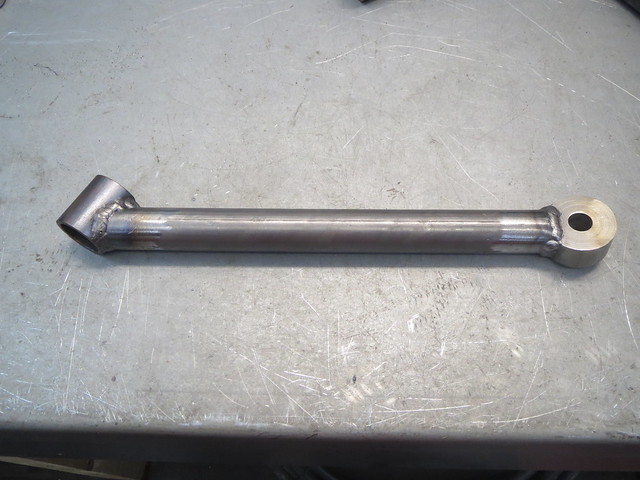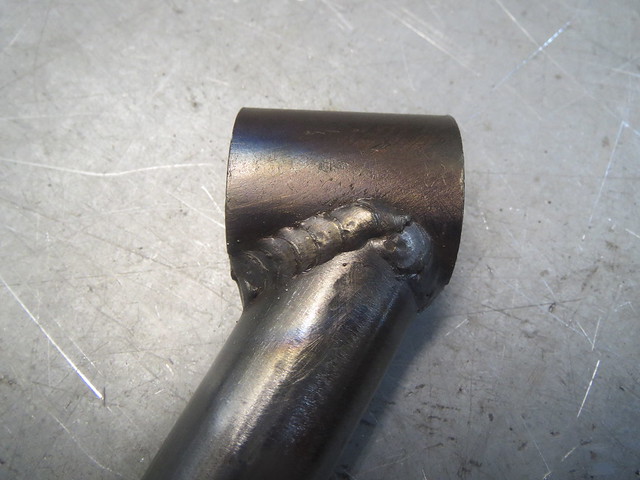Since the Mk 1 wishbone only sort of fits, I needed to cut the chassis support brackets back a bit to allow it room to move. Thankfully, this won't take long. The idea is to loosely follow the curve of the chassis bracket before cutting back to the existing support panel edge. This was the first go:
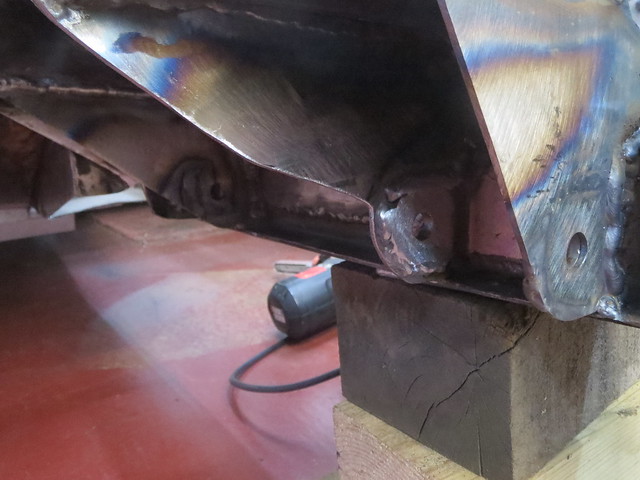
This turned out to be almost enough, but I needed to trim a little further back as I hadn't allowed enough for the main tubes to clear. Once I had done so, the wishbone and hub now go this far up. This should be more than enough for what I need. I doubt I can find a coil over with as much travel as this.
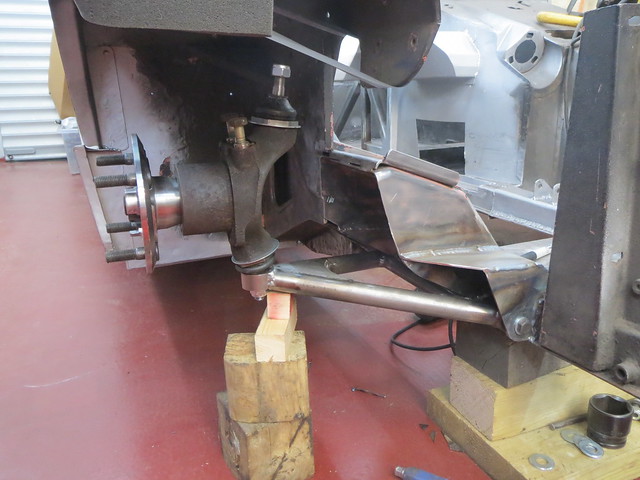
Whilst I was just about out of time to play today, I wanted to see what things looked like with the wheel in place. As the ball joints are new, and therefore stiff, the wheel isn't heavy enough to pull the hub over and it will sit in place.


As hoped, the wishbone sits about flat for now. It will be hard to tell for certain until I get both sides done and the car at something like kerb weight, as I don't know how much the tyre will compress by. It also looks like the overall width is about right too. It might be a bit wider, but with the 185 section tyres on et35 wheels that's no surprise. I had thought the upper ball joint would sit lower than it does. This isn't a bad thing as it happens, as it gives me more options for mounting the top wishbone in a more sensible place. I was thinking it would need to be mounted inside the suspension tower, but it now looks like I can mount it on top somewhere. This should allow me a bolt on mount, which is much, much easier than cutting into the tower and main A frame.
